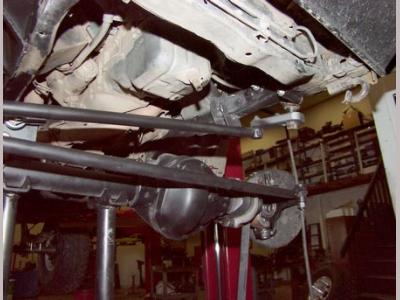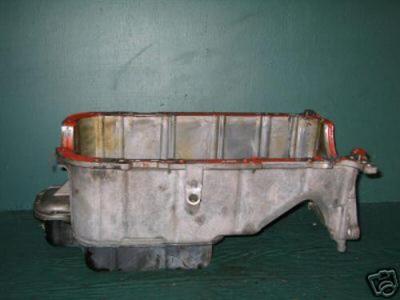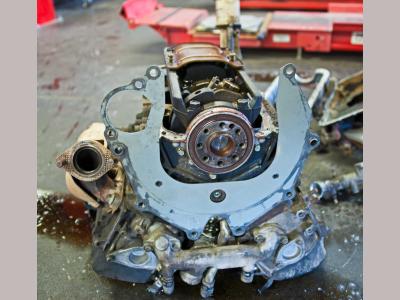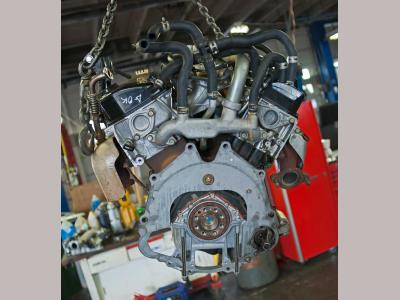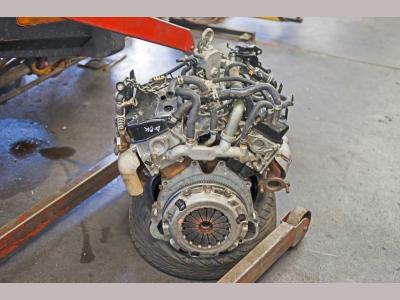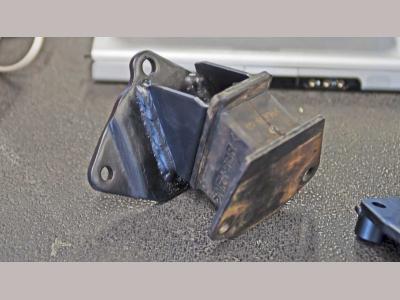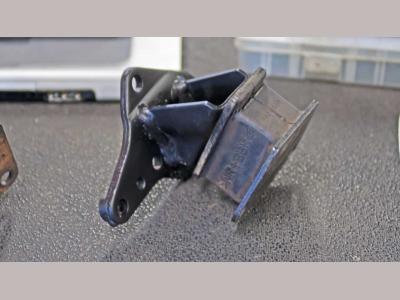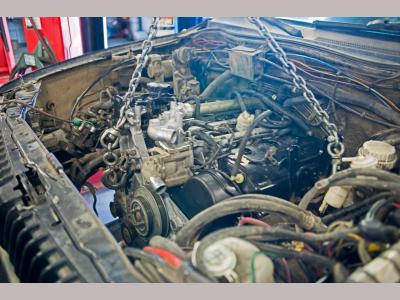3.0L to 3.5L 24v SOHC Engine Conversion ...
Now, the actual work begins. There are a couple of things to be aware of and a couple of issues to address.
We'll start with the oil pan. The 3.0L oil pan for the Montero and Montero Sport is different than the 3.5L oil pan and the two are not interchangeable. While the pans look very similar in dimension they are not. Thankfully, the over all height is the same, but the sump section of the 3.5L pan is longer and extends further towards the rear and extends out past the front of the block. This may or may not create clearance issues so this should be taken into consideration.
The primary difference is in the design of the rear of the two oil pans. The 3.0L oil pan uses a seperate aluminum casting that acts as a cover for the lower quarter of the manual transmission bell housing. The 3.5L has this piece integrated into the oil pan.
This leads to the next issue. The bell housing backing plate or bell housing cover. While not significantly different, the two are different. We found that the simplest solution was to use the backing plate from the 3.5L automatic transmission bell housing since it mated up with the 3.5L oil pan and didn't leave the gaping holes that the backing plate from the manual transmission bell housing did.
A little judicious use of a die-grinder was needed to allow the starter to bolt to the bell housing but otherwise no other modifications were necessary. The 3.5L automatic transmission backing plate still leaves two very small gaps at the very bottom on either side of the oil pan and one tiny hole behind the driver side flex plate access pannel. Rather than try to modify the backing plate or weld material onto the oil pan or bell housing we decided the gaps were small enough to fill in with a small amount of gray RTV. All three gaps are easily accessable from both sides. Mention should be made here of the two flex plate access covers. These are generally discarded by salvage yards when the engine or transmission is pulled so they're most likey missing if you're buying a used engine. Do not drive the vehicle without these covers in place!
The factory 3.0L fly wheel, clutch assembly and V5MT1 tramsmission assembly bolt in with no modifications. Mitsubishi makes a different starter for the manual transmission and automatic transmission vehicles and they are not interchangeable even though they look identical. The 3.0L manual transmission starter must be used.
The engine frame mounts, motor mount brackets that attach the motor mounts (isolators) to the engine and rubber motor mounts (isolators) changed considerably between 1997-1999 and 2000-2005 so the 3.5L isn't a simple 'bolt in'. The 3.5L motor mounts (isolators) and motor mount engine brackets are are taller than their 3.0L counterparts, the bolt holes on the 3.0L brackets don't line up on the 3.5L engine block, and the frame pads are considerably shorter.
This is #1 of the two things that require fabrication. It's not really possible to make either set of brackets work using basic hand tools. Thankfully, the salvage yard left the 3.5L engine motor mount brackets on the new engine so we had a set of both the 3.5L and 3.0L brackets and I already had almost new motor mounts from my 3.0L.
The brackets are made in two pieces and then welded together - the plate that bolts to the engine and the stand off that the motor mount (rubber isolator) bolts to. We opted to separate the plates from the stand offs on each set and swap plates and stand offs. We used the 3.5L plates that bolt to the block and the stand offs from the 3.0L.
Getting the alignment and height correct is a task so everything was tack welded first, fitted and then finish welded and reinstalled. Using the new hybrid mount brackets with the 3.0L motor mounts allowed everything to go back into the engine bay as if it had come that way from the factory.
This is probably a good point at which to mention that before bolting the engine into the frame it's a good idea to hook up the coolant hoses at the rear of the block. There isn't much room and trying to get between the firewall and block after the engine is bolted to the bell housing and frame is almost impossible without removing most of the top end.
The exhaust is #2 of the things requiring fabrication. The 3.0L y-pipe and down pipe will not fit on the 3.5L engine. The exhaust mainfolds on the 3.0L and 3.5L are identical even though Mitsubishi shows one side has a superseded part number; the 18mm increase in deck height shoves the heads up and away from vertical centerline so the pipes are slightly too short and the bend angles are off just a bit. Fixing this issue is less trouble than the motor mount assemblies. A quick trip to a good exhaust shop will take care of this in short order.
